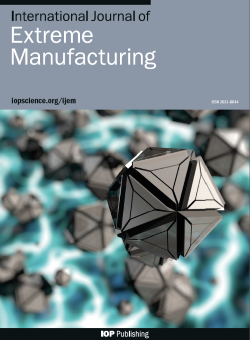Fabrication and integration of photonic devices for phase-change memory and neuromorphic computing
IF 16.1
1区 工程技术
Q1 ENGINEERING, MANUFACTURING
引用次数: 0
Abstract
In the past decade, there has been tremendous progress in integrating chalcogenide phase-change materials (PCMs) on the silicon photonic platform for non-volatile memory to neuromorphic in-memory computing applications. Especially, these non von Neumann computational elements and systems benefit from mass manufacturing of silicon photonic integrated circuits (PICs) on 8-inch wafers using 130-nm complementary metal-oxide semiconductor (CMOS) line. Chip manufacturing based on the deep-ultraviolet (DUV) lithography and electron-beam lithography (EBL) enable rapid prototyping of PICs, which can be integrated with high-quality PCMs based on the wafer-scale sputtering technique as a back-end-of-line (BEOL) process. In this article, we overview recent advances of waveguide integrated PCM memory cells, functional devices, and neuromorphic systems, with an emphasis on fabrication and integration processes to attain the state-of-the-art device performance. After a short overview of PCM based photonic devices, we discuss the materials properties of the functional layer as well as the progress on the light guiding layer, namely, the silicon and germanium waveguide platforms. Next, we discuss the cleanroom fabrication flow of waveguide devices integrated with thin films and nanowires, silicon waveguide and plasmonic microheaters for electrothermal switching of PCMs and mixed-mode operation. Finally, the fabrication of photonic and photonic-electronic neuromorphic computing systems is reviewed. These systems consist arrays of PCM memory elements for associative learning, matrix-vector multiplication, and pattern recognition. With large-scale integration, neuromorphic photonic computing paradigm holds the promise to outperform digital electronic accelerators by taking the advantages of ultra-high bandwidth, high speed, and energy efficient operation in running machine learning algorithms.制造和集成用于相变存储器和神经形态计算的光子器件
过去十年间,在硅光子平台上集成掺杂卤化物相变材料 (PCM) 用于非易失性存储器和神经形态内存计算应用方面取得了巨大进展。这些非冯-诺伊曼计算元件和系统尤其受益于在 8 英寸晶圆上使用 130 纳米互补金属氧化物半导体 (CMOS) 线路大规模制造硅光子集成电路 (PIC)。基于深紫外(DUV)光刻技术和电子束光刻技术(EBL)的芯片制造实现了 PIC 的快速原型开发,PIC 可以与基于晶圆级溅射技术的高质量 PCM 集成,作为一种后端(BEOL)工艺。在本文中,我们将概述波导集成 PCM 存储单元、功能器件和神经形态系统的最新进展,重点介绍实现最先进器件性能的制造和集成工艺。在简要概述基于 PCM 的光子器件后,我们讨论了功能层的材料特性以及光导层(即硅和锗波导平台)的进展。接下来,我们将讨论集成了薄膜和纳米线的波导器件、硅波导和等离子体微加热器的无尘室制造流程,以实现 PCM 的电热开关和混合模式操作。最后,还回顾了光子和光子电子神经形态计算系统的制造过程。这些系统由用于联想学习、矩阵向量乘法和模式识别的 PCM 存储元件阵列组成。随着大规模集成的实现,神经形态光子计算范例有望在运行机器学习算法时发挥超高带宽、高速和高能效运行的优势,从而超越数字电子加速器。
本文章由计算机程序翻译,如有差异,请以英文原文为准。
求助全文
约1分钟内获得全文
求助全文
来源期刊

International Journal of Extreme Manufacturing
Engineering-Industrial and Manufacturing Engineering
CiteScore
17.70
自引率
6.10%
发文量
83
审稿时长
12 weeks
期刊介绍:
The International Journal of Extreme Manufacturing (IJEM) focuses on publishing original articles and reviews related to the science and technology of manufacturing functional devices and systems with extreme dimensions and/or extreme functionalities. The journal covers a wide range of topics, from fundamental science to cutting-edge technologies that push the boundaries of currently known theories, methods, scales, environments, and performance. Extreme manufacturing encompasses various aspects such as manufacturing with extremely high energy density, ultrahigh precision, extremely small spatial and temporal scales, extremely intensive fields, and giant systems with extreme complexity and several factors. It encompasses multiple disciplines, including machinery, materials, optics, physics, chemistry, mechanics, and mathematics. The journal is interested in theories, processes, metrology, characterization, equipment, conditions, and system integration in extreme manufacturing. Additionally, it covers materials, structures, and devices with extreme functionalities.
 求助内容:
求助内容: 应助结果提醒方式:
应助结果提醒方式:


